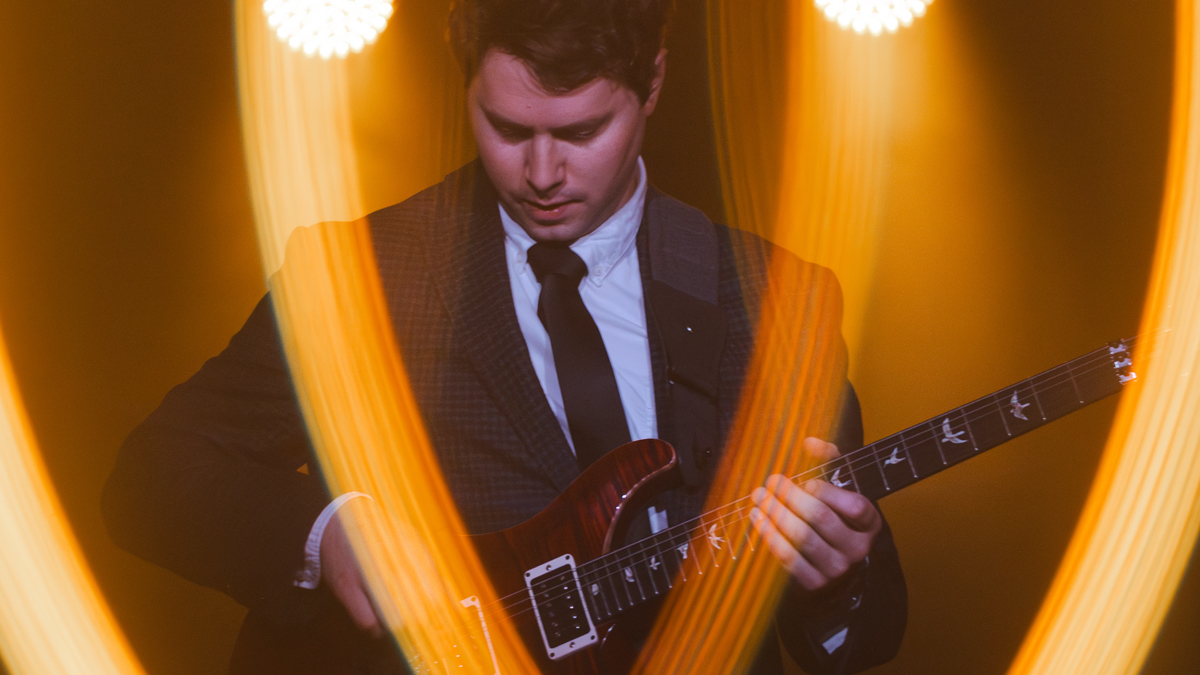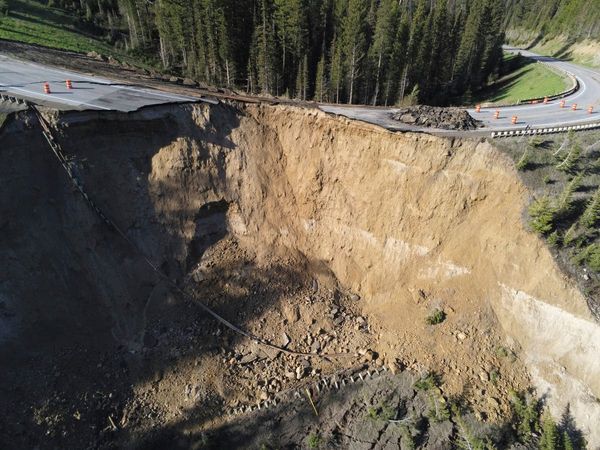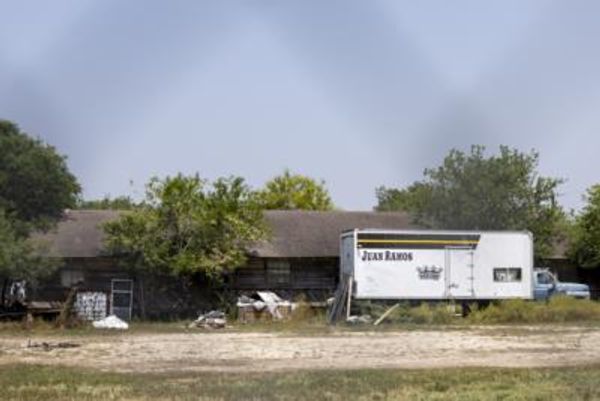
If you’ve come across the username ‘Music Is Win’, you probably know who Tyler Larson is. The Nashville-based content creator has become one of the internet’s most prominent and engaging guitar personalities – someone who is highly respected for producing quality videos that cover just about every single topic guitar players find themselves thinking about.
There are lessons that provide professional instruction across an array of styles, others devoted to understanding music from a more theoretical standpoint, plus gear tests with no shortage of tasteful chops to demonstrate the product du jour. He’s also interviewed different kinds of guitar heroes for his channel, from ’80s shredders like Steve Vai to Paul Gilbert and Zakk Wylde to modern masters like St. Vincent, Yvette Young and Cory Wong, examining their signature tones and techniques.
Then, of course, there are the more light-hearted musings to be found on his channel – including jokingly “buying” the first Klon ever built from JHS owner Josh Scott for half a million dollars, actually acquiring one on Reverb for close to $5,000 and then A/Bing it against a fake bought on Wish for 100 times less. Like we said, these are all perfectly reasonable things every guitar player ends up thinking about at some point in their lives…
That’s already enough to be keeping busy with, but this year he’s added to his workload by unveiling his debut solo album, titled Lotus. And given the quality of the playing and recording we’ve heard on his channel, it comes as little surprise that the new music is as brilliant as it is diverse…
“This music is sort of representative of my roots in the instrumental guitar realm,” he tells GW from his home in Nashville. “I got into Steve Vai, Joe Satriani and Paul Gilbert, as well as other Shrapnel guys like Vinnie Moore. That was the kind of music I was listening to in high school.
“It was a mixture of that plus all the usual classic rock stuff from Jimi Hendrix to Led Zeppelin, AC/DC and Metallica. These are all artists that have inspired me – the influence has always been there so this record was my chance to get all that down.”
Even though the music has been out for only a matter of weeks, he’s already collating and finalizing ideas for album number two. Ask the man himself and he’ll be the first to tell you the jump from being an online guitar personality to a recording musician in his own right has been exhilarating and rewarding – so much so, the creative floodgates have now been well and truly forced open.
“I’ve been writing so much music since this album, too,” Larson reveals. “It’s funny how it works – when you put something out, you realize there’s a lot more left in the well. I plan to continue honing my sound as I get better at songwriting and performing. I want to make music happen in the real world, not just behind a screen.
“I think I was attracted to fast guitar music because it sounded so scary. I like to be humbled, apparently. I’m just scratching the surface compared to what those guys play. That’s the beauty of influences. You take what you can facilitate and push to your maximum and then hopefully it will come out as your own unique voice.”
One of the first things you released was the song Pops, which definitely has a nod to Joe Satriani’s Midnight in how you’re moving around tapped shapes with two notes played on each hand…
I wanted to make actual songs rather than showing how I could be on Level 10 the whole time
“It is definitely a Satriani technique, or at least that’s where I heard it first. He was using different finger positions and rhythms but the concept of the galloped tapping motion with four different notes to create an extended chord is something I learned from him. So it uses the same sort of idea as Midnight – where tapping is employed to convey pretty basic harmony. My song is pretty bluesy and classic rock, but it’s the delivery that kinda meshes the influences I like.”
The other early single, Zero Three Five, is stylistically closer to players like John Mayer…
“Yeah, I appreciate you noticing that – these are all really positive comparisons! John Mayer is definitely ingrained into my guitar playing. There’s that bluesy melodic sensibility he took from B.B. King, Albert King and those guys. When I was writing this music, I didn’t want it to be anything I couldn’t perform. As a content creator, you want to put your best stuff on display, but you also have to be real with yourself. I wanted to make actual songs rather than showing how I could be on Level 10 the whole time.
“Simplifying, for lack of a better word, is a way to move around sections and tell a story. I guess what I’m saying is an inversion of that whole ‘less is more’ cliché. There is truth in that stuff, and it does have an impact when you’re coming up with music that has to be engaging… especially with instrumental music that has no vocals. Most of this album is like that. There are a couple of songs where I’m starting to learn what my singing voice is… it’s all on display for everyone to watch!”
You roped in session legend Tim Pierce for the track Into the Dark. As well as all his studio and live work, he’s another famous YouTuber…
“If you get the opportunity to work with Tim in any capacity, you should just say yes! I just happen to be friends with him. We met through PRS a few years back, hit it off and have always leaned on each other for advice because he’s also a YouTube creator. And before that he obviously has this unbelievable resume of sessions he’s played on.
“I just like to surround myself with people who are better than me! He actually reached out to me when I put out a version of this song, Into the Dark, which was stuck at the end of a YouTube clip. And Tim sent me a message saying he loved the track and wanted to use it for one of his videos. So this song has been around since 2019 or 2020.
The most fun thing about making this album was finally taking advantage of all this gear I’ve accumulated for reviews or different kinds of videos, using things for their intended purpose
“When I was going through the music for this album, I knew I’d always loved this piece and thought it would be good to ask Tim if he wanted to play on it because I love collaborating. A lot of awesome musicians played on this album and Tim is just the cream of the crop. You can’t go wrong with Tim Pierce playing music for you… especially if he asks first!”
Speaking of PRS, they definitely seem like your preferred brand of guitar. You’ve used other other gear, too, but would it be fair to say PRS is home for you?
“Yeah, I’ve always played with PRS guitars. I’ve worked with Paul extensively over the years through guitar clinics and an online school we had during the Covid lockdown. They’ve always been really supportive. Jeanne [Nooney] is my primary point of contact over there. A lot of people in the YouTube space communicate with her. She is amazing!
“A lot of guitar companies have come around to what musicians can do online and how to support them. I love working with a lot of brands, but PRS is my home base. It’s all about the necks for me! But I’m not exclusive to anything – I love all amps, guitars, pedals and ways of recording. The most fun thing about making this album was finally taking advantage of all this gear I’ve accumulated for reviews or different kinds of videos, using things for their intended purpose. It’s been a nice exploration.”
The expensive stuff costs more for a reason, but it’s interesting how us players can get just as attached to affordable gear when it’s made right!
“For sure! It’s funny how when you become obsessed with guitars, the price tag or brand really doesn’t matter. When you find something that works for you, that’s it… you know it will be in your life forever.
“I have a Danelectro ’84. It’s basically a Strat copy with lipstick pickups and is probably worth around $400. And it’s one of my main guitars, right up there with the $10k Custom Shop SG. The more you play and practice, the more you find value beyond the price tag or name on the headstock.”
There are some interesting effects on this record, from vibes and modulation to more atmospheric kinds of wetness…
The most fun thing about making this album was finally taking advantage of all this gear I’ve accumulated for reviews or different kinds of videos, using things for their intended purpose
“Effects-wise, the highlights would be the Sabbadius [Funky] Vibe on the song Zero Three Five. That’s my go-to vibe. There was also a lot of Source Audio Effects, like the reverse delay heard on the song Guitar Hero. That was their Nemesis delay pedal. I’d also use automation to reverse and double up delays. Part of my nerd process was creating delay sounds that couldn’t really be repeated.
“There’s a pedal called Habit by Chase Bliss and that thing does something different every single time you use it. You have to get a sound going and then start messing with the knobs. It’s so polar opposite to how I would dial in my gain tones or my clean tones. It’s nice to have sections that depart from any sort of control, like in my cover of Burn the Witch by Radiohead. I had that delay spew and slow down in a trail to make the distorted parts go into the clean verses, rather than drop off from one sonic plain to the next.
“That’s where the strange pedals come in, they allow you to make sounds within songs rather than full sections. Because as a content creator, I’m very used to working in sections. So this made me write cohesive movements within each song, almost like an orchestra. I wanted things to sound like they were supposed to happen and I found a lot of help there in ambience.”
So what were you plugging these pedals into?
“I used my 30th anniversary Bogner Shiva for a lot of the distorted tones. Occasionally, the the gain came from other things – on my cover of Burn the Witch by Radiohead I used that Lizard Queen pedal that JHS and Electro-Harmonix collaborated on. The original is all strings but I always heard it as a metal thing, so that fuzz ended up being the inspiration for how that entire arrangement came to be. Oh, and I definitely dialed in the Petrucci wah on Guitar Hero – because that song is all about people who inspired me…”
Well, we’d be nowhere without our influences, so why not pen a song in tribute to them…
Steve Vai is one of a kind, not only as a gifted guitarist, but also because he’s so humble and giving. People like him are the reason I made this album
“When I was younger I would put on live tapes of Randy Rhoads, fast-forwarding right to the solos and then pretend I was the one playing them! So yeah, the song is all about wanting to be a guitar hero yourself.
“There’s a big Satriani and Petrucci influence on that one and definitely progressive side to it. I think that song has three different time signatures and still feels like a rock song. I’m pretty basic. Harmony is what really does it for me, and I come from more of a blues and classic rock background. That helps keep it from getting too out there as far as the listener is concerned!”
You’ve interviewed a fair few heroes yourself for the channel – one of the interactions resulting in Steve Vai performing rare track Dyin’ Day live and dedicating it to you…
“It was crazy, man. Every time I communicate with him, I can’t quite believe it. Talking to someone like that never gets old. I’m not comparing myself to Steve Vai, but I’ve met people who have watched my videos and thanked me. I look at those interactions so much differently after meeting my heroes, not that I was ever a dickhead to anybody before!
“Steve Vai is one of a kind, not only as a gifted guitarist, but also because he’s so humble and giving. People like him are the reason I made this album. I love making content but I just want to play music in front of humans. I’ve played shows here and there but nothing under my own name or original since college. The reason why he’d never played that song live is because it required a special 12-string guitar. So he hadn’t played that since recording it!”
St. Vincent was another big-name guest. What did you learn from her?
“She was great to talk to and one of the best interviews I’ve done. She’s so articulate and humble, very willing to share. From a guitar nerd perspective, we talked a lot about her process for getting riffs to come out. She went to Berklee for a time and understands music theory but doesn’t necessarily lean on it.
“I got the impression she’s very much a tinkerer. We all have that to an extent, but in her case it really dictates her final sound. It’s almost like a Tom Morello-esque approach to effects or how riffs sound played on one set of strings versus another. She uses her ear a lot to figure out what works best, as well as trial and error. I’m sure she has her plug-and-play go-to’s like we all do, but she’s more of a mad scientist, I think.
“She’s also incredible with lyrics and where she chooses to put her lines. Her melodic rhythm is really tough to replicate or emulate. That’s what makes her songs interesting, because she can think beyond the guitar. She’s mastered songwriting in general as a multi-talented person.”
Some of your most popular videos involve the infamous Klon Centaur. What’s your verdict – are they really worth the money they fetch?
What happens when you give some dummy the biggest and baddest guitar pedal in the world? Is it worth that much to most normal people? The answer is definitely not!
“Someone who owns a Klon will probably tell you they are [laughs]! The first video was sort of like lightning in a bottle. I’d always been curious about that pedal and wanted to know what’s the deal with this stupid pony horse thing. Why do people care about what color it is or if the tail is longer? I kinda got obsessed with it. I had the means after years and years of working really hard. I think I had negative $12 in my bank account a few years before starting my YouTube.
“So I got to a point where I could justify a business expense that’s a guitar pedal! Obviously there are demos of a Klon already out there but no-one was going to be an idiot like me. What happens when you give some dummy the biggest and baddest guitar pedal in the world? Is it worth that much to most normal people? The answer is definitely not!
“But the point of the story is to share my experience. Because I’m mainly doing this stuff because I can… it’s not about showing off my collection or whatever. I make these videos because it’s stuff I would want to watch. If the answer is yes, then I go ahead and make the video. People are either interested in stuff that costs a ton of money or no money… it’s kinda weird.”
Well, that Wish klone didn’t sound too bad in comparison, to be honest…
“I know! I felt it was nearly as good. If you’re listening at home on your phone or even your computer speakers, it sounded very close. Guitar players will tell you there’s magic in gear. I think it has to do with a little bit of comfort. If someone finds their ideal Venn diagram of tone and reliability, that piece of gear will become immortalized to them. If enough people agree on that, then that piece of gear becomes sought-after. Stop making those pedals, and they become the Klon! It’s this weird lore that we all agree to be part of.”
The Bad Monkey debacle summed up how crazy the whole guitar business can be. The right amount of hype can turn it into the Wild West…
There are three main parameters that you need to stick to and keep in your battle plan: consistency, quality and authenticity
“Everything happens so fast now. There are so many people in this [online guitar] space that I feel like an OG. Even JHS got their YouTube thing going not too long ago. They fell onto my radar in about 2018 or 2019. They’ve really upped the game and become one of the big trendsetters. There are also guitar stores that have YouTube channels, everyone’s jumping in. And yeah, it’s like the Wild West with little pistols everywhere and everyone’s riding their horses around… or should I say their centaurs!”
Your channel features a mix of high quality, great playing and the right amount of humor. What advice can you offer to all the guitar influencers starting out right now?
“I have a pretty succinct and actionable answer. Anyone can do this. It starts with how hard you want to work at it. There are three main parameters that you need to stick to and keep in your battle plan. And a bit like you just said, it’s consistency, quality and authenticity.
“The consistency is above and beyond the most important. Once you start, you just can’t stop. The momentum builds over time as people discover your work. You can call it the algorithm or plain luck. But if you’re intermittent with your posting and publishing, you won’t develop a consistent audience.
“Quality is something that will change on an ongoing basis. It’s the technical stuff: can you edit a video, can you have a camera set up to capture everything to an industry-standard level? It can just be your iPhone at this point. And, finally, authenticity is your personality.”

So how you did you learn to harness that side of things?
“Talk to the camera like you would talk to your buddy… that’s my best advice. When I look back on my early videos, I find them hard to watch. You can feel the nerves. That makes people not want to watch. So chat to the camera like you are talking to a friend or talking to yourself in the mirror. That’s the solution for finding an audience.
“If you do all these things, you will end up where you are meant to be. If you are good or even semi-good, you will probably do okay! If you’re not good, you will learn that and maybe move on to something else. That grand scheme I have with this album is similar – I want to grow my quality and authenticity by incorporating live music and songwriting into my lessons and videos.
“There’s only so much you can do in your studio. Recently I’ve been going out to guitar stores and other places just to get outside of my regular place. The stage is a great way of delivering cool concepts – stuff like ‘I just learned this neoclassical lick – can I stick it in a country jam?’
“I have all these intricate plans for tying my songs and live performances to my tools for tuition. It’s all about the growth. If you have the passion to do it, the consistency is the easiest part, despite it being the most demanding. Because you just wake up with ideas. Over and over you go until you find what you’re looking for.”
- Lotus is out now on Spotify and Apple Music.







